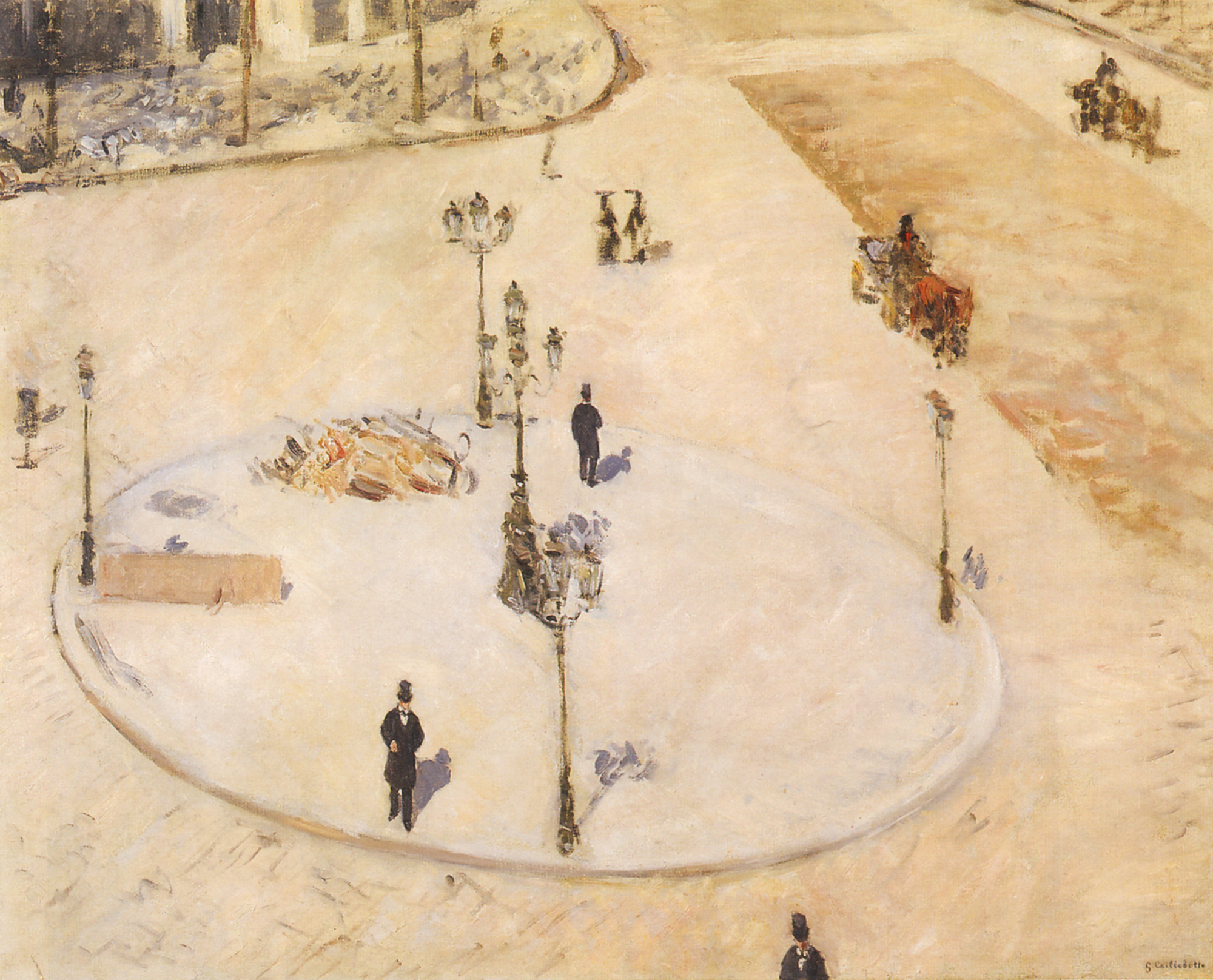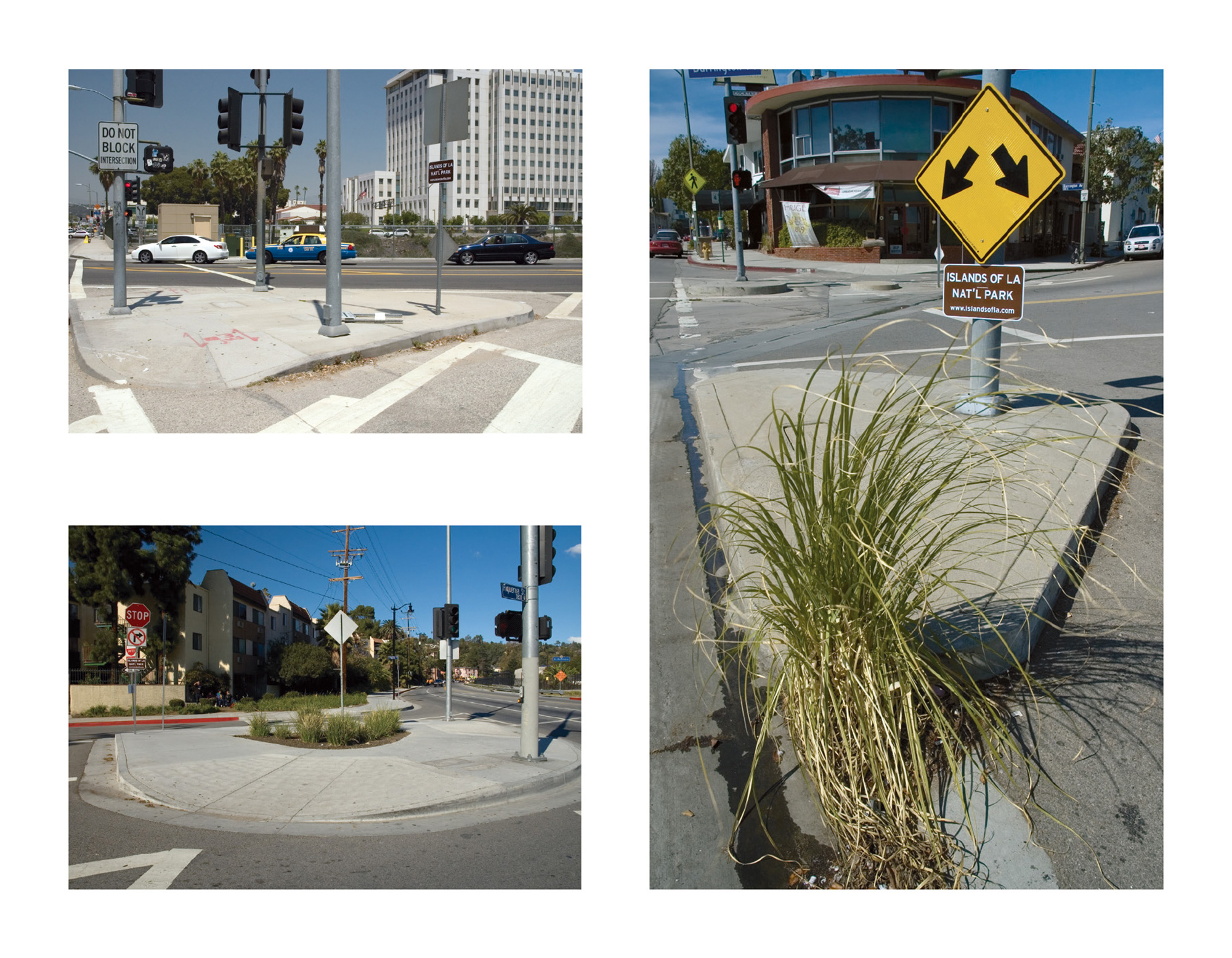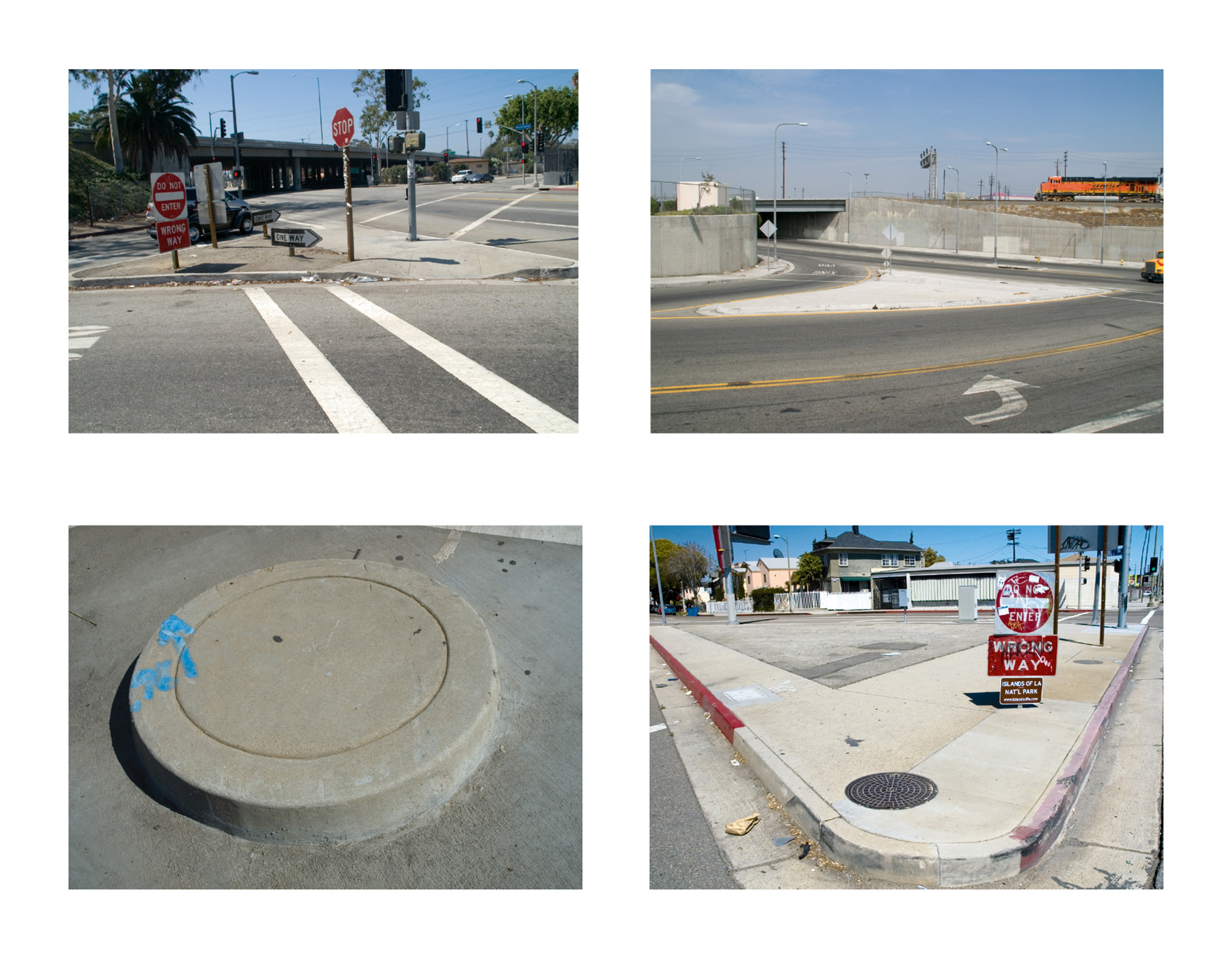Isles of Safety
Considering the traffic island
Tom Vanderbilt

“Where are we exactly—are we near the island?”
“The ‘island’—is that what you call it?”
“The traffic island. The patch of waste ground below the motorway. Are we near there?”
—J. G. Ballard, Concrete Island
The concept of “island” is central to J. G. Ballard’s literary construct of a modern-day Robinson Crusoe—the architect Robert Maitland—marooned in London after his Jaguar plunges off a high-speed exit from the elevated Westway. As Ballard writes: “Maitland saw that he had crashed into a small traffic island, some two hundred yards long and triangular in shape, that lay in the waste ground between three converging motorway routes.”
Ballard was merely taking to an extreme the sense that the human could begin to feel lost in the modernist city, amidst the dead zones forgotten by planning, bulwarked by concrete, segregated by function—the feeling of spatial alienation rendered with such austere grace in the Australian painter Geoffrey Smart’s 1962 painting Cahill Expressway (after the elevated and cleaving highway in Sydney), which depicts a solitary pedestrian who has come to a physical, if not metaphysical, impasse, his would-be traverse of the street blocked by a large concrete wall and a highway off-ramp.
The pedant in me, however, bristles at Ballard’s use of the words “traffic island,” for that is not what it is; in fact, there probably is not a proper name at all for Maitland’s habitat—“underpass” comes closest, and one might even make a case for the space as a “gore area,” a piece of traffic phraseology referring not to violence but to the triangular space formed by the diversion of a road away from the main road, generally at off-ramps.


A traffic island, rather, is a (usually) raised median in the roadway. Its origins are a bit murky. John Richardson, in his Annals of London, makes note of an event in 1864: “What is thought to be the first traffic island is erected in St. James’s Street, at the expense of Colonel Pierpont, to enable him to get to his club more safely.” (I do not know this Colonel, but one pictures an imperious, walrus-mustachioed figure recently returned from a spell at Simla Hill Station.) Several decades later, “isles of safety,” as they were known, often adorned with “electroliers” and other forms of civic ornament, began to appear in New York City at the behest of William Phelps Eno, the “father of traffic safety.” While the isles were generally championed, a 1916 article in Landscape Architecture (with the leading title “The Pedestrian Traffic Problem,” the problem being that pedestrians were obstructing cars) argued against isles, except in very wide roads, “for they induce people to cross where they shouldn’t.” New York police commissioner Arthur Woods sounded a similar critique, adding, “The chances they take to get to the safety isle have resulted, in our experience here in New York, in increasing the numbers of accidents on such corners.” Over time, though, traffic islands have been accepted as boons to safety; indeed, a recent conversion of Kensington High Street in London went so far as to place bicycle racks on the islands, thus inviting people to cross “where they shouldn’t.” After the change, the street has actually become safer for pedestrians.